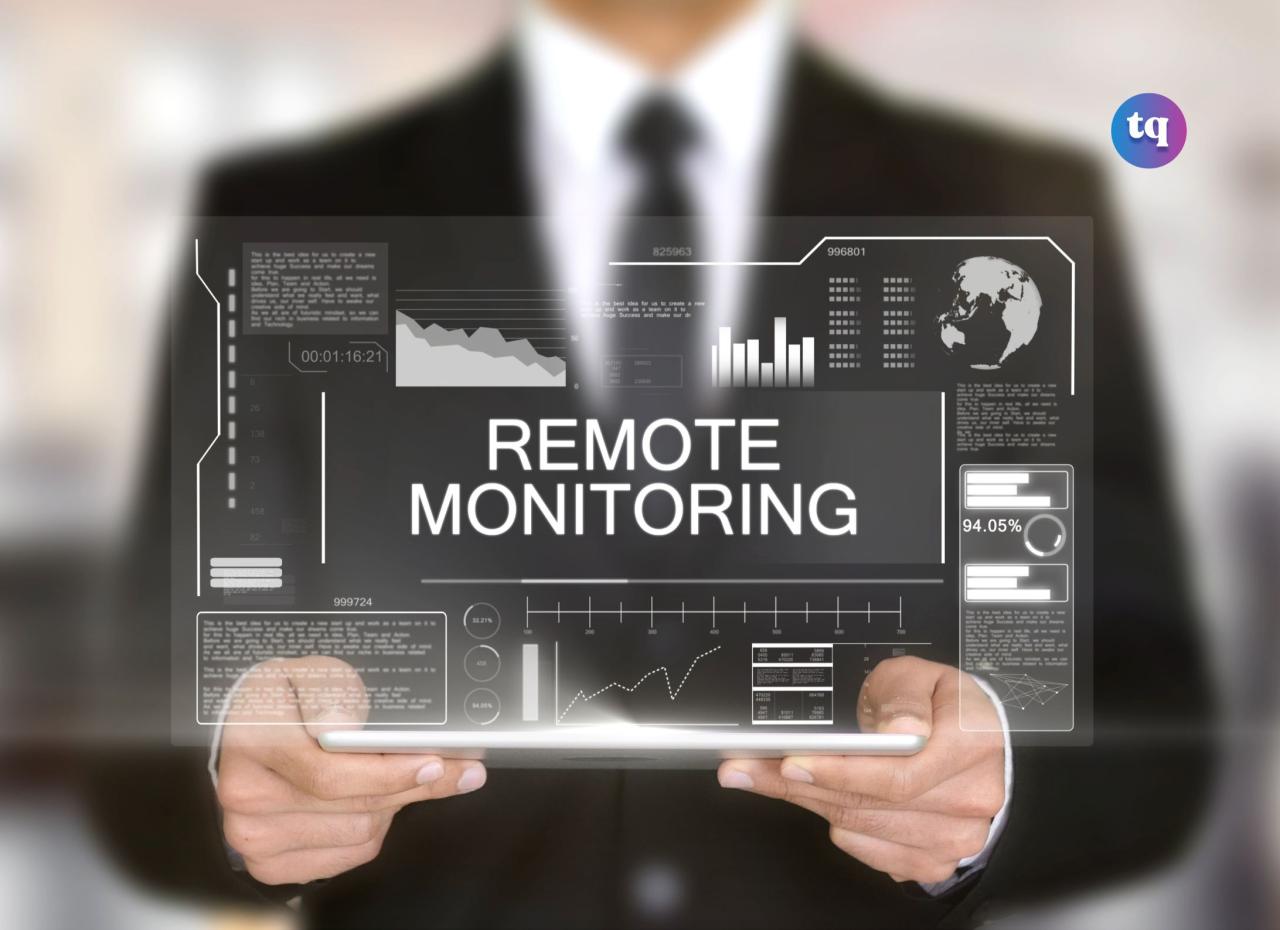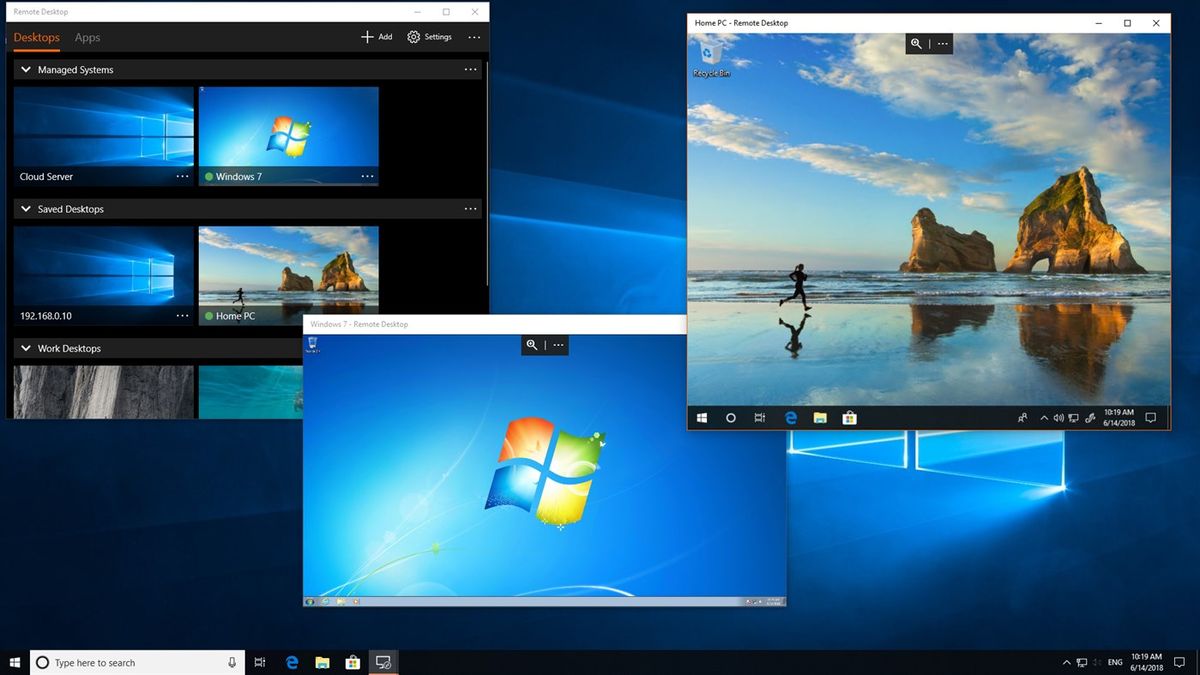Windows remote monitoring, at its core, empowers you to oversee and manage your Windows systems from any location, offering a powerful solution for IT professionals and businesses alike. This technology bridges the gap between physical presence and system control, allowing for proactive monitoring, timely troubleshooting, and efficient optimization.
Table of Contents
Imagine a world where you can remotely access and monitor your Windows devices, whether it’s a single workstation or an entire network. Windows remote monitoring provides the tools and insights to achieve this, offering real-time visibility into system performance, security, and health. This comprehensive approach enables you to identify potential issues before they escalate, preventing downtime and ensuring smooth operations.
Introduction to Windows Remote Monitoring

Windows remote monitoring is a technology that allows administrators to monitor and manage Windows devices remotely. It provides a way to access and control computers from anywhere with an internet connection, making it a valuable tool for managing IT infrastructure.
Remote monitoring offers a number of benefits for businesses and individuals. It enables proactive problem-solving, allowing administrators to identify and address issues before they impact users. It also simplifies system management tasks, such as software updates, security patching, and troubleshooting.
Real-World Scenarios
Windows remote monitoring is widely used in various scenarios, including:
- IT Support and Management: Remote monitoring allows IT support teams to troubleshoot and resolve issues on user devices without physically being present. They can remotely access computers, view system logs, and perform diagnostics.
- Remote Access and Control: Businesses often use remote monitoring to provide remote access to employees working from home or on the go. This enables them to access company resources and applications securely.
- Server Management: Remote monitoring is essential for managing servers, allowing administrators to monitor server performance, manage resources, and ensure system stability.
- Security Monitoring: Remote monitoring tools can help detect and respond to security threats in real-time. They can monitor system activity, identify suspicious behavior, and take appropriate actions to protect sensitive data.
Key Features of Windows Remote Monitoring Tools
Windows remote monitoring tools provide a comprehensive set of features designed to enhance system administration, security, and troubleshooting. These tools enable IT professionals to remotely access, manage, and monitor Windows systems, ensuring optimal performance and security.
Real-Time Monitoring and Alerts
Real-time monitoring is crucial for proactive system management. Windows remote monitoring tools provide continuous data collection and analysis, enabling administrators to identify and address potential issues before they escalate. Key features include:
- Performance Metrics: Monitoring CPU usage, memory consumption, disk space, and network activity provides insights into system performance and potential bottlenecks.
- Event Logging: Real-time logging of system events, including security alerts, errors, and warnings, helps identify and investigate incidents.
- Alerts and Notifications: Configurable alerts notify administrators of critical events, such as system failures, security breaches, or performance degradation, allowing for prompt intervention.
Real-time monitoring and alerts empower administrators to proactively address issues, minimizing downtime and ensuring system stability.
Remote Access Capabilities
Remote access features enable administrators to connect to and manage Windows systems from anywhere with an internet connection. This is essential for:
- Troubleshooting: Remote access allows administrators to diagnose and resolve issues on remote systems without physically being present.
- Software Installation and Updates: Remotely installing and updating software ensures all systems are running the latest versions and security patches.
- System Configuration: Remote access provides the ability to configure and customize system settings, including security policies and user accounts.
Remote access capabilities significantly enhance efficiency and flexibility, enabling administrators to manage systems remotely, reducing travel time and minimizing disruptions.
Types of Windows Remote Monitoring Solutions

Windows remote monitoring solutions can be broadly categorized into two main types: agent-based and agentless. These solutions differ in their approach to collecting and transmitting data, which ultimately affects their performance, security, and compatibility. Understanding the differences between these types is crucial for choosing the best solution for your specific needs.
Agent-Based Solutions, Windows remote monitoring
Agent-based solutions rely on software agents installed on the monitored Windows devices. These agents continuously collect data about the system’s performance, security, and other relevant metrics. They then transmit this data to a central monitoring server for analysis and reporting.
Agent-based solutions offer several advantages:
- Detailed Monitoring: Agents can gather comprehensive data about the system’s hardware, software, and network activity, providing detailed insights into its performance and security.
- Real-Time Monitoring: Agents can provide real-time data, allowing for prompt detection and response to issues.
- Customizable Monitoring: Agents can be configured to monitor specific metrics and events based on your needs, enabling tailored monitoring solutions.
- Proactive Monitoring: Agents can trigger alerts and actions based on predefined thresholds, allowing for proactive issue resolution.
However, agent-based solutions also have some drawbacks:
- Resource Consumption: Agents can consume system resources, potentially impacting performance, especially on resource-constrained devices.
- Installation and Management: Installing and managing agents on multiple devices can be time-consuming and require administrative privileges.
- Security Risks: Agents can potentially be vulnerable to security breaches, requiring regular updates and security measures.
Popular examples of agent-based Windows remote monitoring tools include:
- Datadog: A cloud-based monitoring platform that provides comprehensive monitoring capabilities, including real-time metrics, dashboards, and alerts.
- SolarWinds Server & Application Monitor: A comprehensive server monitoring solution that offers detailed performance metrics, security monitoring, and proactive alerting.
- ManageEngine OpManager: A network and server monitoring tool that provides real-time performance data, alerts, and reporting capabilities.
Agentless Solutions
Agentless solutions rely on network protocols and data collection techniques that do not require software agents to be installed on the monitored devices. Instead, they leverage existing network infrastructure and data sources to gather information.
Agentless solutions offer several benefits:
- Minimal Resource Impact: Agentless solutions have minimal impact on the monitored devices’ resources, as they don’t require any software installation.
- Ease of Deployment: Agentless solutions are typically easier to deploy, as they don’t require agent installation and configuration on individual devices.
- Reduced Security Risks: Agentless solutions eliminate the security risks associated with software agents, as they don’t introduce any new software components.
However, agentless solutions also have limitations:
- Limited Data Availability: Agentless solutions typically provide less detailed data compared to agent-based solutions, as they rely on network data and system logs.
- Slower Response Times: Agentless solutions may have slower response times for monitoring events, as they rely on network data collection rather than real-time agent reporting.
- Less Customization: Agentless solutions often offer less customization compared to agent-based solutions, as they rely on predefined monitoring methods.
Popular examples of agentless Windows remote monitoring tools include:
- PRTG Network Monitor: A network monitoring tool that leverages SNMP, WMI, and other protocols to collect data from devices without requiring agents.
- Auvik: A cloud-based network monitoring platform that provides comprehensive network visibility and insights through agentless monitoring.
- LogicMonitor: A cloud-based monitoring platform that uses agentless techniques to monitor network devices, servers, and applications.
Final Thoughts: Windows Remote Monitoring
In conclusion, Windows remote monitoring offers a powerful suite of capabilities that streamline IT management, enhance security, and optimize system performance. By leveraging the right tools and strategies, organizations can harness the benefits of remote monitoring to achieve greater efficiency, reduce costs, and ensure business continuity. The future of Windows remote monitoring holds exciting possibilities, with advancements in cloud computing, artificial intelligence, and automation poised to further revolutionize how we manage and secure our systems.
Windows remote monitoring offers a powerful way to manage and troubleshoot systems from afar. For those working with legacy systems, the hyperterminal application might be a familiar tool for remote access. While hyperterminal is primarily used for serial communication, it highlights the importance of having diverse remote monitoring tools at your disposal for various scenarios.
